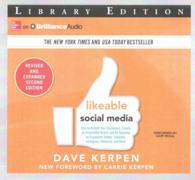Full Description
The Routledge Guide to Teaching Foreign Languages for Translation and Interpreting is an essential resource for lecturers and course designers looking to develop a foreign language module within a translation and interpreting program. It is also valuable for students and practicing translators and interpreters who wish to expand their linguistic repertoire by adding an additional language.
This practical guide initiates a dialogue between translation studies and foreign language teaching, highlighting the distinctive nature of this training compared to other foreign language teaching contexts. It explores key pedagogical aspects that enable language lecturers and course designers to align their teaching practices with the specific training needs of students in translation and interpreting programs.
With a clear, practical approach, this volume aims to bridge the gap between theory and practice, addressing the lack of research and ready-made materials that can support lecturers in their teaching endeavors. It integrates the theoretical foundations of TILLT (Translation and Interpreting-oriented Language Learning and Teaching) with practical teaching guidelines and resources designed to help language lecturers connect their instruction to the development of translation competence.
Contents
Introduction
I.1. The need for a volume on translation-oriented language training
I.2. Main objectives and themes
I.3. Scope and aims
I.4. Structure
I.5. Copyright considerations
1. Framing Translation and Interpreting-oriented Language Learning and Teaching (TILLT)
1.1. Delineating TILLT
1.1.1. General languages vs. languages for translation purposes
1.1.2. Customizing the training process
1.2. Principal teaching tenets
1.2.1. Contrastive approach
1.2.2. Teaching materials
1.2.3. Learning autonomy
1.3. Concluding remarks
2. Building an effective TILLT module
2.1. Needs analysis
2.2. Type of curriculum and syllabus
2.3. Learning objectives
2.4. Language proficiency levels
2.5. Matching proficiency levels with cognitive skills
2.6. Scaffolding the learning process
2.7. Profiling the lecturer
2.8. Concluding remarks
3. Receptive skills
3.1. Reading comprehension
3.1.1. Targeting the source text as a holistic unit of meaning
3.1.2. A textual analysis framework for designing activities
3.1.3. Types of texts to be used
3.1.4. How to organize a reading session
3.1.5. Assessing reading
3.1.6. Sample reading lesson
3.2. Listening comprehension
3.2.1. Listening comprehension as an active skill
3.2.2. Listening comprehension as a complex cognitive activity
3.2.3. The problem with conventional listening activities
3.2.4. Designing listening comprehension activities
3.2.5. How to organize a listening session
3.2.6. Assessing listening
3.2.7. Sample listening lesson
3.3. Concluding remarks
4. Production skills
4.1. Written expression
4.1.1. Inverse translation as a goal
4.1.2. Mediation tasks as teaching resources
4.1.3. The written-expression process
4.1.4. Sample/process-product/assessment model
4.1.5. How to organize a writing session
4.1.6. Assessing writing
4.1.7. Sample writing lesson
4.2. Oral expression
4.2.1. Speaking in TILLT modules
4.2.2. Types of speaking activities
4.2.3. How to organize a speaking session
4.2.4. Assessing speaking
4.2.5. Sample speaking lesson
4.3. Closing remarks
5. Grammar, vocabulary, and sociocultural knowledge
5.1. Grammar
5.1.1. Grammar in TILLT
5.1.2. Teaching grammar
5.1.3. Sample grammar activities
5.2. Vocabulary
5.2.1. Vocabulary in TILLT
5.2.2. Teaching vocabulary
5.2.3. Sample vocabulary activity
5.3. Sociocultural knowledge
5.3.1. Sociocultural knowledge in TILLT
5.3.2. Teaching sociocultural aspects
5.3.3. Sample sociocultural activity
5.4. Concluding remarks
Conclusions
C.1. Main takeaways
C.2. Future research
C.3. Future practice
C.4. Final remarks
Appendices
Index






